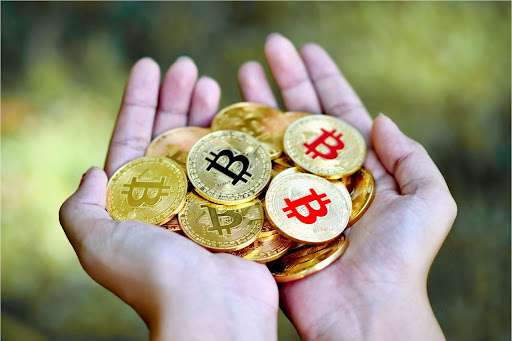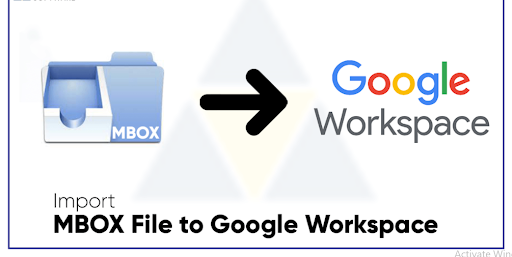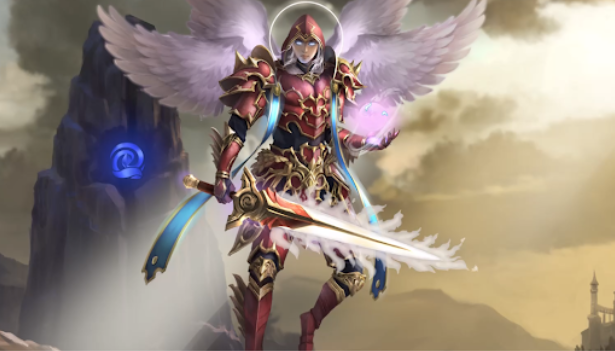Changelog
Follow up on the latest improvements and updates.
RSS

The purpose of cryptocurrencies and the decentralized finance (DeFi) ecosystem is to create a world where everyone has access to financial services. All necessary and useful financial products and services – transactions, payments, savings, loans, and insurance – will be made affordable and sustainable to individuals and businesses in this world. Thanks to cryptocurrencies, there has been some progress in terms of economic growth and freedom. The crypto asset class is well-known for its ease of access in comparison to traditional assets, which require unnecessary bank and government regulations. However, the digital currency wave's promise of financial inclusion is still a long way off. Primarily because the development of DeFi projects and applications has lagged significantly behind and is currently concentrated in small pockets.
It's not as if cryptocurrencies or the underlying blockchain technology have some sort of inherent limitation. Indeed, many people today are brimming with exciting ideas and eager to leverage the power of decentralized finance to create decentralized applications, or dapps (short for Decentralized apps). However, software coding is required to develop these dapps and their components, such as smart contracts. There is a severe shortage of qualified technology professionals with cutting-edge skill sets such as smart contract coding and blockchain engineering. The scarcity of skilled labor required to implement the latest wave of DeFi and blockchain technology has stifled the industry's overall growth.
No-code solutions are recent approaches to reducing the reliance on skilled coders for developing and deploying blockchain software. These are development platforms that enable the creation of decentralized applications and tokens with little to no coding required. Rather than using traditional code-based programming techniques, users can design applications using graphical user interfaces and configuration tools. Because almost anyone can use them, no-code platforms have the potential to democratize crypto development and make it accessible to everyone. The first of these platforms, no-code token generators facilitate the creation of crypto tokens quickly and easily.
**What is No-Code Token Development?
The most common way to code a token is to specify all of its properties using standards such as ERC-20 for the Ethereum blockchain and BEP20 for the Binance Smart Chain. The complete specification, referred to as a smart contract, is written in Solidity. For instance, you should include the following line of code in your contract code: string public name = "MyBestToken" to give your token a name. While some of these constructs, such as the name, are straightforward, modern tokens require sophisticated trading controls and mechanics, such as fee rewards or hyper-deflationary buyback. To do so, you'll need a firm grasp of the solidity programming language. However, Solidity is a difficult language to learn and requires a significant time investment. There is insufficient talent with this skill set available on the market, resulting in a significant bottleneck for crypto project launches.
No-code token development platforms address this issue by providing an intuitive graphical interface. With a few clicks and selections, you can create advanced tokens. There is no need for coding. While the first generation of these platforms supported only basic token creation, the third generation platforms launched recently support modern tokenomics.
**Advantages and Disadvantages
Before we get into the specific features, let's discuss the platforms' advantages. To begin, they are incredibly fast. Your token will be generated instantly. They're straightforward to create; there's no need to spend hours upon hours learning Solidity and scouring forums for assistance when you get stuck. By utilizing these platforms, which are typically very affordable, you can save a significant amount of money and time.
While these no-code platforms show great promise, they do have some drawbacks. While many advanced mechanics are now available out-of-the-box, their flexibility is still limited, and they may be ineffective in situations requiring significant customization. However, the new generation of token creation platforms is highly customizable, and additional innovations are in the works to alleviate current constraints.
**Currently Available Products
Consider some of the platform offerings for no-code token minting. The first ones were launched last year in 2020 with limited capabilities, while the most advanced ones were launched recently in 2021.
**Generation One: The fundamental platforms
The first generation of platforms, such as Unicrypt Network's token minter, allow for the specification of only the most fundamental parameters, such as name, symbol, and supply. They were able to charge a premium because they were the first to market. They have since fallen behind the times and are now used exclusively to mint new tokens as part of a package deal offered by these platforms.
**The Second Generation: Template-Based Platforms
As a result of the release of tokens with advanced tokenomics, such as fee rewards to holders or automatic liquidity generation, a new breed of token generator platforms has emerged. These platforms operate by cloning the source code of a well-known token and allowing users to specify critical parameters. DxMint is one such platform; it currently offers three templates: a standard template, a yield or fee reward template, and a liquidity generation template. However, these platforms can be confusing for new token creators due to the proliferation of isolated templates that lack a unified view of all features. Additionally, you frequently wish to combine the best features of multiple templates, which is obviously impossible. Without a viable alternative, these platforms are currently the most popular.
**Third Generation: Modular platforms
Platforms of the future have begun to emerge, capable of incorporating the best financial mechanics and features into a single template. Due to the modular architecture of the token, token developers can choose which features to include in their tokens. The Mudra Token Creator platform is one such generation three platform to create BEP20 tokens. All advanced mechanics are available, including whale limits, static rewards, deflationary token burn, automatic liquidity generation, and hyper-deflationary buyback. It enables token creators to select which mechanics to include in their tokens rather than being restricted to pre-canned templates. Token creators can now use these platforms to create a SafeMoon- or EverRise-like token. Additionally, they can combine the best characteristics of both tokens into a single token.
**Future platform architectures
In the future, these platforms are expected to become even more adaptable and extensible. They may even enable token developers to develop their own mechanics rather than relying on the most recent ones. The promised future has begun to unfold, and we are watching these platforms evolve with interest.
**Creating a cryptocurrency ecosystem that is open to all
No-code token development platforms have significantly reduced the barrier to entry for token creators who are not programmers. Mudra Token Creator, a generation three platform, has reimagined this journey by offering a modular platform from which you can choose the features that are most appropriate for your needs. Everyone now has the ability to create their own unique crypto token. As a result, a slew of new products and tokens are being launched on blockchain platforms like BSC and Ethereum. These tokens are being used in a variety of different projects. Some are charity crowdfunding tokens that are used to raise funds for a specific cause, while others are utility tokens that grant holders access to a blockchain-based product or service. Naturally, many are payment tokens, which act as both a medium of exchange and a store of value. With No-code Token development platforms, the possibilities are truly limitless.

Importing Microsoft Outlook (MBOX) data into Lotus Notes or other Lotus products has always been a headache for users who either don't know how or are afraid that they won't be able to export the data. For Outlook users with a MBOX and a web browser, there is an easy solution. For those without an Outlook Web Access user interface, follow these steps to move your data directly from your mailbox to your Lotus Workspace or other product.
Understand first how to import MBOX data into Google Workspace or another product: From the main menu of Google, go to Tools > Account Settings and then Import. In the 'Envelopes' section, select the option to import MBOX emails. Next, click the Gmail option to open the main menu. On the left side under the section named 'Your Account' you will see a box asking if you want to import MBOX emails. Select 'Yes' to all options and then click OK.
Importing your Import MBOX to Google Workspace email content into your domain workspace import interface should take only a few seconds. In fact, it will not take much more than a minute or so. If you import your content, it will be added to your existing email address book. If you do not import your content, it will not be added to your existing email address book. It also cannot be imported to the new 'Gmail' email interface, which is basically the Google mail client interface designed for Google accounts.
Importing your MBOX data into your Lotus Workspace email client requires that you follow two separate steps. The first step is importing the MBOX file. This file can be located in the same directory as your Lotus Workstation email client and will be named after your company's main company name. Once you have located the mbox file, double click on it, select the copy option, then confirm the send key to add it to your Lotus account.
Importing your MBOX emails into your domain email client is as simple as copying the mbox file from your Lotus Worksphere to your home folder on your account. You will be prompted to put in your primary user ID and password. Follow the prompts, and you will be asked if you want to import mbox files that are folders, single items, or both. Once you have selected the option to import mbox files, you will be prompted to put in the URL of the Import MBOX to Lotus Notes account that you want the information from. Finally, you will be asked to confirm the name of the folder that you want the information from.
Importing your mbox email client is as simple as copying an appropriate file from your computer into your Lotus Worksphere or importing it through the file manager on your computer. When the import is complete, you will have access to all of your mbox files, and your information will be securely integrated into your domain account. To retrieve your mbox files, log into your account and access the relevant folder. You should see a new icon on the dashboard for "MBOX," which means your folder has been successfully imported into Google.

For the first time ever, gamers around the world have been given the opportunity to tap into the powerful and profitable market potential o. The creators of NFT Gaming have managed to unlock the door to the future of gaming through their innovation and commitment to delivering the best quality games possible to a worldwide audience of tens of millions. In doing so, they have created a new path for gaming in the digital realm. They have created a niche market that is completely unbound by any type of traditional marketing barrier and has the potential to transform the gaming industry forever. Let's take a brief look at how this revolutionary game-changing concept works.
NFT Gaming begins with its incorporation of two groundbreaking technologies that have been in the works for some years now. The first is the adoption of the NFT protocol that is based on the latest block chain technology. This is an innovative concept that allows the player to transact and receive money from their transactions instantaneously. The second breakthrough concept that was adopted was the implementation of a fully decentralized set of blockchains across the entire network. This allows for each player to have complete control over their transactions and provides the opportunity to forge ahead in their own fashion. Both of these technologies have the potential to revolutionize the way people play in the world of in-game currency trading.
**Combining Two Revolutionary Technologies
**By combining these two revolutionary technologies, nftgaming has the potential to change the way millions of people play in the world of virtual currency trade. It will allow players from anywhere in the world to interact and engage in pay-to-play video games with real cash. This has the ability to shake up the video gaming landscape and open up entirely new markets for those that are willing to adjust to changes in the face of changing consumer demands and technological advances.
NFT Gaming is also taking the idea of creating a virtual currency into the twenty-first century. The idea for this futuristic virtual currency was spawned from the same feverish excitement that has gripped the world of e-sports. Players are attracted by the prospect of being able to transform their video games into cash and spending it however they want. The problem is that there is no traditional currency in place to back up the digital items that are being spent on these video games. The only thing that stands between the dream and reality is the powerful decentralized system that is being built by the NFT Gaming Network.
The concept behind NFT Gaming is built on a number of cutting edge technologies. The developers of this cutting edge technology hope to enable players to transact and receive payment for any virtual item in the world using either a computer or a smartphone. Mobile transaction gaming is the hottest trend in the world of digital currencies and the developers are at work on an ambitious plan that will allow gamers the ability to participate in the best virtual world on the planet from anywhere they want. The developers believe that the solution to unlock the unlocked profit potential lies in the innovative disruptive power of the Internet. They envision NFTgame as a free online "game" that will enable players to instantly access the gaming industry's most profitable market, allowing them unparalleled access to the most valuable real estate in the world.
The developers of NFT Gaming have envisioned NFT as a "diamond in the rough" for a new breed of gamers who are hungry for the promise of financial gain. The first step towards this dream comes in the form of a free app that will allow gamers to exchange game chips for cash. This allows players the unique opportunity to build real wealth over time through the gaming industry's most lucrative medium. Once the player earns enough money through transactions made within the mobile app, the company will provide them with the NFT token which can then be traded back into actual currency.
**Advantages Of Playing NFT Games
**The company intends to take advantage of the rapid rise of mobile gaming culture to create a profitable revenue stream which is then turned into profit by turning the virtual asset ownership into cold hard cash. By capitalizing on the current trend of mobile game players, NFT Gaming plans to create and establish a community of buyers and sellers who will work together to create a thriving micro-transaction economy. Players will earn virtual cash for each NFT they sell while also enjoying the benefits of earning NFT points they can use towards acquiring additional cards and tickets which unlock powerful power ups and game modes. These powerful features will allow players to maximize their earning potential and enjoy the benefits of earning more in every NFT they spend.
With the success of both Facebook and Zynga, it is easy to see why the future of gaming looks bright with NFT Gaming leading the way. This promising team of developers has seen the potential of working with a highly trusted and transparent virtual platform where they can thrive for years to come. In a world dominated by digital asset ownership and tokenization, NFT Gaming is blazing a trail into uncharted waters. Their goal is to ensure that NFT is not only a successful business venture but also a lucrative opportunity that can change the way we live by changing the way people collect and trade collectible and currency-based games. Cryptocurrency-based games are here to stay. Cryptocurrencies are here to change the way we live and they are here to stay.